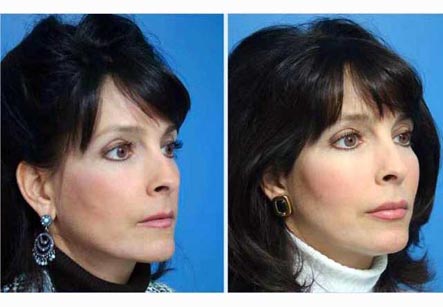Fat Injection
Introduction
Fat injection or grafting has wide applications in cosmetic surgery. Fat injected into areas requiring volume-enhancement produces safe, long-lasting, and natural-appearing results as volume is replaced to tissues where fat is diminished. Fat grafting usually involves harvesting fat from one part of the body, washing/ purifying it, and the carefully re-injecting it with specially designed needles into the areas requiring augmentation. The procedure may need to be performed repeatedly several times to achieve the desired result. Swelling, which is a common post-effect of fat injection procedure, usually gets resolved within 2-3 weeks. The degree of swelling depends on the area injected.
Procedure
• A thorough pre-procedural assessment is suggested in all the patients requesting consideration for fat injection, which certainly requires several visits to the cosmetic surgeon before the procedure.
Fat injections can be an effective way to reduce wrinkles, diminish acne scarring and regain a more youthful appearance.

• A surgeon requires a full history and physical examination before the procedure.
• Pre-procedure photographs are to be taken for clinical records and comparison purposes post surgery.
• An informed consent will be obtained from the patients.
• The skin may be marked during the procedures while taking pictures and while deciding the steps in the surgery.
• Either local or general anaesthesia may be used, depending on the surgeon’s preference.
• Fat is harvested using a special suction cannula using sterile technique.
• Once required amount of fat is obtained from the donor area, it is then purified. This often requires the use of a centrifuge which spins the fat and removes impurities.
• The fat is then placed into the areas requiring augmentation. The injection needle is usually passed in and out of the areas to be augmented multiple times. This creates a ‘grid’ of threads of fat graft. The areas that were injected may then be massaged by the surgeon to create a satisfactory contour.
• A dressing is placed after that.
Inclusion criteria for the procedure:
Patients who benefit from fat grafting are people who desire augmentation or filling of volume-deficient areas. The most commonly grafted areas include
• face (including the lips),
• hands,
• depressions in the skin contour such as those that have developed following liposuction and scarring.
Fat is one of most well-tolerated fillers available to aesthetic surgeons, and thus has broad applications.
Generally, patients who are considered for fat injection should ideally be good health. If a patient has a history of abnormal bleeding or swelling following a procedure he/ she should notify this to the surgeon.
A smoking history should be disclosed to your surgeon.
Each patient’s anatomy and proportions differ, and the decision to utilize fat injection techniques depends on the goals of the patient as well as the surgeon.
Recovery after procedure of fat injection:
• A dressing is done on the injected areas.
• These dressings include the use of tapes or compressive-type dressings.
• The cosmetic surgeon may request patients not to sit or lie on injected areas for a prescribed period.
• Surgeons may also instruct patients regarding a massage program after the procedure. Swelling and bruising usually resolve within 2 to 3 weeks.
Benefits of the procedure:
Fat is one of most well-tolerated fillers available to aesthetic surgeons, and thus has broad applications. It is natural-appearing, lasts a long time, and is safe. It is effective filler used for changing body contour, revising scars, filling depressions created by liposuction, and rejuvenating the hands and face. Perhaps most importantly, it spares the patient the inherent risks associated with fillers derived from animals or cadavers.
Complications of the procedure:
1. Swelling is the most common post-operative side effect. Most of the swelling settles down within several weeks.
2. Under or over correction of the defect
3. Infection
4. Slight asymmetry or contour irregularity. This usually improves as the swelling resolves.
5. Bruising in both the donor and recipient areas as a result of bleeding. It is unusual to require a transfusion.
6. Numbness of the skin overlying the donor and injected areas. This is usually temporary.
7. Loss of fat viability, with resultant failure of the desired augmentation